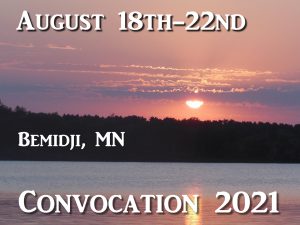You mentioned “According to Isa 28 and a number or scriptures, Jewish religious success in the Land will be at an all time high when the Antichrist strikes unexpectedly.” Isa 28 speaks of the covenant with death made by the leaders of the nation, but where does it talk about good prosperity and success during that period?
The short answer to your question as to why I expect Israel to be in a state of “euphoria” when the tribulation begins is because they are dwelling in a false security that is based on a seemingly successful negotiation with the Antichrist. For this cause, it is Israel in particular who is saying, “peace and safety” when disaster strikes.
In evident result from a false peace covenant (Dan 9:27; 11:23), and as part of the negotiations of that peace, it appears that Israel regains access to the forbidden temple mount, a circumstance nearly impossible under the present circumstance. From Isa 63:18 it appears that the Jews have only recently recovered their holy places when the Antichrist invades the city.
I discuss another reason for Israel’s relaxed guard and unpreparedness in an article I wrote called, “The Ships of Chittim.” There I show that an apparently very formidable western naval power will turn back a preliminary southward advance by the Antichrist very shortly before he invades Israel with irreistable force (Dan 11:30-31). No doubt the success of the ships of Chittim in turning back the Antichrist from his southward advance will make the security of the covenant seem invincible. Since we know that the abomination of verse 31 starts the last 3 1/2 years (Dan 9:27; 12:11), this intervention by the ships of Chittim must be very near the end of the first 3 1/2 years.
Before coming to Isa 28 specifically, I call your attention to Eze 38-39, which is undeniably eschatological. Before the redemption of Eze 39:22-29 (clearly the post-tribulational day of the Lord; see Eze 39:8 with Rev 16:14, 17), the attention of the northern invader is turned to a people only recently regathered from a long exile of “many days” (Eze 38:8). He has taken notice of the new nation’s fetching prosperity (Eze 38:10-13). Notice that the moment of invasion finds the recently restored nation in a state of presumed safety.
That this security is not the security of the millennium is made clear by the fact that Israel comes to the knowledge of God only AFTER the destruction of Gog’s armies. This is the day of the Lord (Eze 39:8, 22, 28-29). In contrast, when Satan is released at the end of the millennium to once again gather the forces of the nations, Israel has known the Lord for a thousand years. Thus, the context of Eze 38-39 is clearly pre-millennial. Evidently, John’s post-millennial reference to Gog and Magog envisions a symbolic reiteration of the great gathering of the nations to Armageddon and the great day of God Almighty (Rev 16:14-16). It appears that a further release of Satan to seduce the nations to attempt another futile assault against the camp of God’s elect is to show the resilience of a hidden depravity that only requires to be stirred by Satan. This confirms the words of Paul concerning the natural man, who is not inclined to behold the majesty of the Lord, even “in the Land of uprightness” (Isa 26:10).
So what peace is this in Eze 38:8, 11, 14? In strictly historical terms, it is the peace that Israel has enjoyed at times of relative security. This must not be confused with millennial security, as assumed by many scholars, because Eze 39:26 shows clearly that during this time of security, the nation’s sin is only increased. Therefore, the security envisioned here is BEFORE the righteousness that comes to Israel at the day of the Lord (Eze 39:8, 22, 28-29). The prophets show that every penitent Jewish survivor that enters the Land will all know the Lord and all their children after them and none will ever depart again from everlasting righteousness of the New Covenant (see Isa 4:3; 45:17, 25; 54:13; 59:21; 60:21; Jer 31:34; 32:40; Eze 39:22, 28-29 etc.)
Therefore, the peace that is in view in Eze 38:8, 11, 14; 39:26 is manifestly a false peace. This sounds very much like the language Paul uses to remind his Thessalonians that the sudden destruction of the day of the Lord is preceded by a bold declaration of “peace and safety” (1Thes 5:3). This is the deadly presumption that is presupposed in Israel’s “covenant with death and hell” in Isa 28:15, 18.
In Daniel, we see a deceitful peace arrangement with the Antichrist (Dan 8:25; 9:27; 11:23-24) that ends in an appalling act of desecration at the temple mount (Dan 11:31; 12:11; Mt 24:15; 2Thes 2:4). Israel’s everlasting deliverance immediately follows the unequaled trouble of the last half of Daniel’s final week of years (Eze 39:22, 28-29; Dan 12:1, 7, 11; Rev 11:2). It is the false peace arrangement that apparently permits Jewish access to the temple mount and the recovery of the ancient institutions of the temple service (inferred from such passages as Isa 63:18; Dan 9:27; 11:23, 31; 12:11 with Mt 24:15-16; 2Thes 2:4; Rev 11:2).
This scenario agrees very well with mention in Isaiah of a “covenant with death and hell” (Isa 28:15, 18). Now the question: Is this future? Most certainly. Partial fulfillment in the contemporary setting of when the prophecy was given can never be assumed to exhaust it of a fuller and more complete eschatological fulfillment. That is a principal characteristic of prophecy that can be demonstrated in many places. To deny this notable feature of prophecy is to side with the liberal view that prophecy can fail. To affirm it is to acknowledge that prophecy is indeed “here a little and there a little,” in the searching out of an eschatological mystery, as practiced by the people of Qumran (‘pesharim;’ see Wikipedia article) and the NT writers occupation with ‘mystery’ (Mt 11:25; 1Cor 2:7-8; Ro 16:25-26; Eph 6:19; 1Pet 1:11) in keeping with Jesus’ message of the hidden presence of the kingdom.
You rightly grant that a dual fulfillment is reasonable but not certain. I would like to move you to certainty on the basis of the following considerations:
Without doubt, the still coming, still imminent, day of the Lord has been partially realized in the contemporary invasions of the past. However, we notice that prophets of later generations continue to use the same language of imminence to describe the still future day of the Lord. So long as Israel continues in apostasy among the nations, the day of the Lord is not yet, and the curses of the covenant will continue to threaten the nation’s peace until the end. This ultimate and final fulfillment of the day of the Lord is uniformly placed at the end of a final time of national travail. Daniel is more specific, as he places it at the end of a never to be repeated unequaled tribulation that will once more center on Jerusalem.
At different times, particularly the destructions and deportations inflicted first by Assyria and later Babylon, the judgments of that coming day did indeed fall in measure upon Israel. The same can be said of Jesus’ prediction of the destruction of Jerusalem by the Romans. None of these historic calamities exhaustively fulfilled the prophets’ vision of the day of the Lord. This is how later prophets could continue to apply the language of earlier prophets to a later threat, also spoken of as imminent on the contemporary horizon.
It is significant that later prophets did not hesitate to employ the same language of imminence that earlier prophets had used to describe the day of the Lord that threatened the earlier generation facing the Assyrian threat. The pattern was the same. Daniel would postpone Israel’s hope to the end of a further period of 70 sevens. This is why we expect a future “time of Jacob’s trouble” of unequaled tribulation (Jer 30:7 with Dan 12:1; Mt 24:21) that will accomplish to being Jacob to the end of his power (Deut 32:36 with Dan 12:7). This time ends with the day of the Lord and the final deliverance of the long estranged covenant nation (Jer 30:7; Dan 12:1 with Mt 23:39; Acts 3:21; Ro 11:26; Rev 1:7).
That Isa 28 anticipates a more ultimate eschatological fulfillment is made certain by the language of verse 5. “In that day shall the Lord of hosts be for a crown of glory, and for a diadem of beauty, unto the residue of his people, …” This is the common language of the prophets for the ultimate transition from this age of Israel’s estrangement to the day of ultimate covenant fulfillment and vindication in the sight of all nations. The reason this is not so decisive for some commentators is because their system of eschatology does not lead them to expect the literal fulfillment of all that the prophets declare concerning Israel’s post-day of the Lord exaltation to theocratic headship over the nations of the millennium.
In the order of its eschatological application and more complete fulfillment, we see the overwhelming flood (Isa 28:2, 15) of the northern invader (“a mighty and strong one;” Isa 28:2, 15) and the trampling down of Jerusalem (Isa 28:18) to be looking beyond the proto-typical Assyrian to the anti-typical Antichrist of the last and unequaled tribulation. That a yet further treading down is to be accomplished upon Jerusalem is made clear in the New Testament no less than the OT (Mt 24:15-16, 21; Lk 21:24; Rev 11:2). Unlike Isaiah’s reference to “the desolations of many generations” (Isa 61:4), this time of desolation will be of very brief duration (Dan 7:25; 9:27; 12:7, 11; Rev 11:2; 12:6, 14; 13:5).
As mentioned, this will begin after Israel has returned “after many days” and have become prosperous and secure (Eze 38:8, 11-14; Dan 11:23-24). This is precisely what arouses the envy of the northern invader (Eze 38:10-13). As an aside, you may note that Gog is called a “chief prince” (Eze 38:2-3; 39:1) in the same way that Michael the archangel is called “one of the chief princes” in Dan 10:13.
As Michael did battle to remove the “prince of Persia” in Dan 10:13, 20, he will cast down Satan in the middle of Daniel’s last week, so that Satan’s full fury is released upon the earth for the last 3 1/2 years. This is why Eze 38:17 particularly, together with the relation of the Magog invasion to the false security of the first half of the week and the time that the battle ends with Israel’s national repentance at the day of the Lord (Eze 39:8, 22, 28-29), leads me to believe that Gog is Satan who will be incarnate in the Antichrist to fulfill the mystery of iniquity (2Thes 2:7).
This is just some of the evidence to that effect the invasion of Gog is the invasion of Antichrist who with sudden, unexpected, and irresistible force (Dan 11:30-31; 1Thes 5:3; Rev 13:4) will flood Israel with overwhelming armies. With this, Israel’s ill-fated covenant with death and hell will be broken and the continual sin of placing trust in man will be once more violently exposed.
This last in a long line of gentile aggressors will proceed to enter the temple of God at Jerusalem to place the appalling sacrilege that signals the beginning of desolations that will continue throughout the 42 month siege of the city (Mt 24:15-16; 2Thes 2:4; Rev 11:2). At the end of the 42 months, Jesus returns to destroy the man of sin (2Thes 2:8), gather together His elect (Mt 24:31 with 2Thes 2:1), raise the sleeping saints (Isa 26:19, 21; Dan 12:2; 1Cor 15:23, 52, 54) and to turn ungodliness from “Jacob” (Zech 12:10; Ro 11:26; Rev 1:7).
The gentile assailants of history do not exhaust the demand for future fulfillment, since some of these were seen, even by later prophets, as types of a final gentile aggressor that will descend on Jerusalem. Unlike all past invasions that left the people of the covenant in the grave of continued exile, this brief time of unparalleled world affliction will end in resurrection (Eze 37; Hos 5:15; 6:1-2) to final and enduring inheritance, a very different outcome indeed.
The language of Isa 28:12, 16 presupposes that it is the gospel itself that will be expounded to Israel by gentile witnesses (Isa 28:11). This is not merely God communicating to Israel though the foreign invader. This speaks of a prophetic witness denouncing to the scornful leaders in Jerusalem that they have entered presumptuously into an ill-fated covenant with the Antichrist. Rightly understood, this final covenant with death is just the climax and final cure of the habitual tendency of man to trust in himself. The time of probation is now expired, and in love, God must remove the false support. He can no longer tolerate this common tendency in the people of the election, particularly when this presumption is so flagrantly opposed to the clear word of all the Hebrew prophets of old.
Whether secular or religious, it is this inveterate humanism that God must oppose. Confidence in the flesh has been the bane that has exposed the covenant people across the centuries to the curses of the law recorded in Lev 26 and Deut 28-32. The reason apostate Christendom has not suffered similar things is simply because God is not in covenant with the false church that lives only in name. Only that which is the object of God’s special election is exposed to the discipline of the covenant, as also the special malice of Satan (Amos 3:2; Ro 11:29 with Jer 32:42).
The testimony that is being presented to Israel in Isa 28 is the gospel itself, as it is only the revelation of the gospel can adequately answer to the language of verses 12 and 15 (Is 28:12, 15). This is not the ‘milk’ but the meat of the Word that is coming to Israel through foolish gentiles line upon line, here a little and there a little from their own Hebrew scriptures (Isa 28:9 is clearly the background of the milk versus meat language for doctrinal maturity, as employed by the writers of the NT. I believe this is the “meat in due season,” of which Jesus spoke in the Olivet prophecy).
This will be an apologetic of compelling evidence from the prophetic writings such that will make its rejection all the more culpable by those who lightly dismiss it. Part of the offense will be that it comes to them through unqualified gentiles, since that is precisely what is meant by the idiom of the stammering tongue (Deut 28:49; Isa 33:19). So I do not see this Isaiah’s language to be exhausted by God’s pleading with Israel only through a fierce gentile invader, but He speaks to His people through witnesses of a foreign tongue through a line upon line prophetic testimony from the scriptures (this is doctrine; Isa 28:9; 29:4).
The line upon line, here a little there a little testimony of Isa 28 is manifestly the equivalent of Isaiah’s sealed instruction described in Isa 8:14-17 and sealed vision of Isa 29:11. This is the doctrine that the ‘wise’ (Heb, ‘maskilim) who instruct many during great tribulation because a sealed vision has been unsealed at the time of “the end” (Dan 11:32-33; 12:3-4, 7-11; Hab 2:3).
This sealed vision is nothing else than the OT mystery of the gospel that was revealed by the Spirit in the writings of the New Covenant. It comprehends both comings. It is much more than the Antichrist time. It includes the hidden wisdom of the cross, at which not only Israel, but the principalities and powers stumbled (Isa 8:14-15; 28:16; Mt 21:42; 1Cor 2:7-8; Ro 9:32; 1Pet 2:6, 8). It is the so-called ‘messianic secret’ that Jesus guarded throughout His ministry until the appointed time of revelation and full disclosure after the resurrection (Mk 9:9). To increase the offense, this decisive testimony comes to Israel through a “not a people” so to move them to jealousy, and a “foolish nation” so to provoke them to anger (Deut 31:17-18; 32:21; Eze 39:23).
Notice too that at the very time the “teaching” (torah) is being sealed and ‘bound up’ among a band of disciples (Isa 8:15; Mk 4:11), while the face of God is being hidden from the larger nation (Isa 8:16). So there is a notable relationship to be observed between the sealing of vision and prophecy (Dan 9:24) and the time that the face of God is no longer hidden from the nation as a whole (Eze 39:29).
According to Ezekiel, the exilic experience of the hiding of God’s face ends forever with the day of the Lord. “So the house of Israel shall know that I am the Lord their God from that day and forward. And the nations shall know that the house of Israel went into captivity for their iniquity: because they trespassed against me, therefore hid I my face from them … Then shall they know that I am the Lord their God, which cause them to be led into captivity among the heathen: but I have gathered them unto their own land, and have left none of them any more there. Neither will I hide my face any more from them: for I have poured out my spirit upon the house of Israel, saith the Lord God” (Eze 39:22-23, 28-29).
This means that mystery that was opened to the disciples of Jesus after His death (Messiah to be ‘cut off’ at the end of the 69th week; Isa 53:8; Dan 9:26) will be revealed to the penitent survivors of Israel at the end of the unequaled tribulation. This is the mystery behind Daniel’s 70 weeks prophecy (Dan 9:24-27). The anointed Prince (Messiah) is ‘cut off’ at the end of 69 weeks; Isa 53:8; Dan 9:26. The “prince the shall come” (Antichrist) is destroyed at Messiah’s return at the end of the 70th week (Dan 7:11; 9:27; 11:45; 2Thes 2:8; Rev 19:20).
With Messiah’s post-tribulational return, all Israel will know the Lord their God “from that day and forward” (Jer 31:34; Eze 39:22; Mic 5:3-4; Hos 5:15; 6:1-2 with Zech 12:10; Mt 23:39; Ro 11:26; Rev 1:7). With the finishing of the mystery of God (Rev 10:7) at the end of the Daniel’s 70th seven, there is not a Jew living in the Land for whom the vision and the prophecy will be sealed (Isa 59:21; 60:21; Jer 31:24). It is sealed no more. The Spirit is poured out and the face of God will never again be hidden from any Jewish inhabitant of the Land (Eze 39:22, 28-28 with Jer 31:34). “From the day and forward,” the “everlasting righteousness” (Dan 9:24; Jer 32:40) of the New Covenant has come, not only for a small remnant, but for the ‘all Israel’ (the preserved third; Zech 13:9), as an entirely regenerate nation (Isa 4:3; 54:13; 59:21; 60:21; Jer 31:34), born in one day (Isa 66:8; Eze 39:8, 22; Zech 3:9; 12:10; 14:7; Mt 23:39; Rev 1:7).
So I see what I would call a ‘consummate apologetic’ of defense of the gospel coming to Israel. The context shows this to be after the false peace covenant, but before the final treading down of Jerusalem, i.e., the first 3 1/2 years. Included in the general testimony of Jesus will be specific denunciation of the pact with the Antichrist.
Notice how the transmission of this warning and prophetic witness depends on doctrinal maturity (“weaned from the milk, and drawn from the breast;” Isa 28:9). Is this not the maskilim of Daniel’s prophecy that have understanding of the sealed vision? Paul said that his gospel was “according to the revelation of the mystery kept secret since the world began,” and that the gospel now made manifest is to be “made known by the scriptures of the prophets” (Ro 16:25-26, also Mt 13:35). Paul was always interested to demonstrate that the gospel he preached, though a mystery in the past, was “none other things than those which the prophets and Moses did say should come” (Acts 26:22). This was the apostolic ‘modus operandi’ in the evangelizing of both Jews and gentiles.
Though compelling enough to make their dismissal without excuse, the testimony that keeps coming ‘line upon line, here a little, there a little,’ will nevertheless be treated as gibberish and dismissed as unintelligible non-sense, not because it is not a formidable demonstration from the Hebrew scriptures, but because the natural man cannot receive the things of the Spirit, since the many-sided wisdom of God is hidden from the pride of carnal confidence, particularly religious humanism (Lk 10:21; 18:9; Ro 10:2-3).
But when the overflowing scourge will bring the final desolation and treading down of Jerusalem (Isa 28:18; 63:18; Dan 8:13; Lk 21:21-24; Rev 11:2), the message that was despised and dismissed will speak; it will reverberate for 3 1/2 years of terrific attrition. It will be continually reiterated by a people who will share the same experience of wilderness flight and refuge. It will be a powerful witness to Israel when they will see that the anticipation and preparation of the believing remnant will be because they listened to Jesus (Mt 24:15-16, 21), Israel’s rejected Messiah.
The church that will choose to suffer with Israel will go far towards manifesting the true from the false. Now in flight from the face of Antichrist, Jews everywhere will be caused to reflect on an increasingly confirmed prophetic warning that has come to them in the weakness and foolishness of gentile witnesses that have been “weaned from the milk” (Isa 28:9). In such an eschatological context, we may think of Jesus’ charge to those in responsibility for His household to give them “meat in due season” (Mt 24:45). I can well conceive that this meat is the revelation of the mystery of thee gospel that was spoken of in the OT as Isaiah’s, Daniel’s, and Habakkuk’s sealed vision (Isa 8:14-17; 29:11; Dan 12:4, 9; Hab 2:2-3).
Finally, I may be wrong, but it appears that the drunkenness that the prophet speaks of can be shown in other scriptures, particularly ch 29 to be spiritual. However, it may well also be literal, since those who see the terror of the vision without the refreshing that the gospel brings to the justified (Isa 28:12, 16) will seek to anesthetize themselves with strong drink.
I must close for now, but I hope you will prayerfully consider the above evidence for a better view of Isa 28 than we tend to find in most commentaries on Isaiah. You can see that Isa 8, 28, 29 was background for Daniel and the apocalyptic perspective of the NT.
Yours in the Beloved, Reggie




